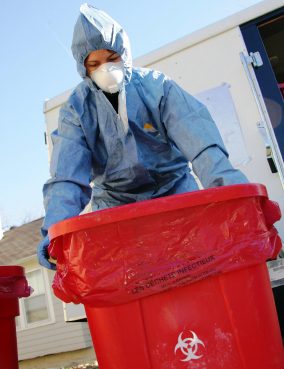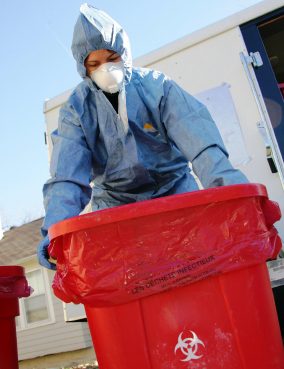

Disposing of pharmaceuticals or medications must be done carefully and meticulously. Some drugs are considered hazardous by the Environmental Protection Agency (EPA) and disposal must be handled in a specific way to avoid the possibility of health or environmental impacts. Complying with the regulations of the EPA can be complicated and confusing, but there are resources to help guide you. This article will help you understand the basics of managing hazardous pharmaceutical waste and how to stay compliant while keeping your community and the environment safe.
What is Hazardous Pharmaceutical Waste?
There are explicit rules put into place by the EPA that companies must follow in order to stay within compliance, called the Resource Conservation and Recovery Act (RCRA). This framework describes pharmaceutical waste as any pharmaceutical known to be dangerous to humans, animals and the environment, requiring specific disposal to prevent contamination. This can be broken down into two subcategories: hazardous and non-hazardous.
Hazardous
Hazardous pharmaceuticals are defined as solid or liquid waste containing dangerous or harmful properties – oftentimes P, U and D-listed wastes. Healthcare facilities and distributors are prohibited from flushing or draining hazardous pharmaceuticals down any drains as disposal options, as they require special management and removal.
Non-Hazardous
Though it’s called “non-hazardous” this category of waste is not necessarily harmless. In fact, non-hazardous in this case simply means “non-RCRA regulated.” If not disposed of properly, these types of wastes could still be dangerous to human health and the environment. Because these aren’t as heavily regulated, it’s considered best practice to dispose of these pharmaceuticals with a licensed professional waste management company.
Types of Pharmaceutical Hazardous Waste
Listed wastes are divided into four classifications by the RCRA: F, K, P, and U-listed.
F-listed: Drugs are generated during the manufacturing process and are from nonspecific sources but may be pertinent to healthcare operations and facilities. Substances include: toluene, methanol, xylene or acetone.
K-listed: Drugs are generated during a facility’s manufacturing process, and are therefore from specific sources. This is typically related to veterinary pharmaceuticals.
P-listed: Drugs are acutely toxic and are generally unused chemicals, pesticides or pharmaceuticals. Substances include: epinephrine, arsenic, arsenic trioxide, and cyanide salts.
U-listed: Drugs are toxic and are generally unused chemicals, pesticides or pharmaceuticals. Substances include: acetyl chloride, azaserine, and acetone.
To remain compliant with all state and federal laws, hazardous waste must be segregated prior to disposal; hazardous waste from non-hazardous waste, then separated again into each listed characteristic grouping. Working with a professional waste disposal company is extremely valuable as they can set your business up with the appropriate disposal containers and guide you through the process.
Contact the Professionals at MLI Environmental
MLI Environmental is proud to provide the highest quality customized biomedical waste management and disposal solutions, including waste streams produced by biotech, medical labs, healthcare facilities, doctors’ offices and more. Request a quote from us today!
